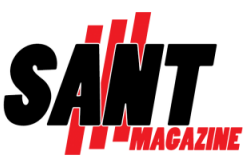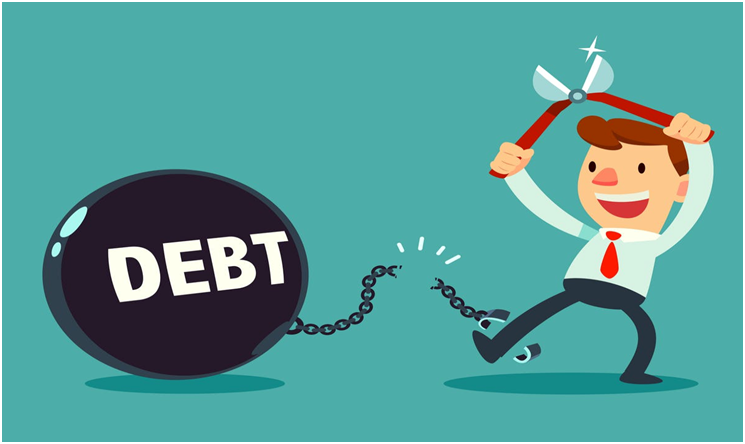Debts can be a huge obstacle for people reaching their financial goals. According to the government, Americans collectively owed at least $14 trillion in debt as of the 4th quarter of 2021. Between student loans, auto loans, mortgages, and credit cards, it is very easy to find yourself trapped in a credit rabbit hole.
On the other hand, climbing out of it and generating financial stability is more challenging. The good news is that there are strategies people can implement to help them improve their financial situation and break this debt cycle for good.
How this debt spiral starts
For a lot of individuals, the slide into this situation starts with student debentures. An estimated 40 million Americans have this kind of credit, with an average balance of more or less $40,000. The bad news is that these things may be necessary to pay for college, either graduate or undergraduate degree, as tuition costs rise every year.
Because paying for technical training or college in cash is impractical for a lot of individuals, education debentures are their only option. The disadvantage of this choice is that taking out this kind of loan immediately compromises a person’s personal balance sheet.
While the borrower is in school, they are accumulating debt at a time when they probably don’t have enough money to make a single debenture payment. They may also be getting other kinds of debt in their early adulthood. For instance, credit cards (CC) can help cover their daily cost of living while the borrower is still in school or after starting their new career journey.
To know more about the history of CCs, click here to find out more.
While a person’s debentures are accruing interests, CCs ante up by charging higher interest rates (IRs) compared to most student debentures, sinking them even deeper into the rabbit hole called debt. When people finish school, debt spending is further reinforced if they live in a place where they need a vehicle to hunt for jobs or commute to their new job.
It can result in a short visit to an auto dealership, where individuals will find themselves confronted by salespeople who cheerfully ask: “What monthly payment method are you looking for?” By the time people leave dealerships, another debt has been added to their burden. A housing loan may come next. Soon, the income percentage dedicated to making the monthly amortization became pretty overwhelming.
To minimize the burden, people will take out another debenture in the form of a debt-consolidation loan. Though bundling high-interest debentures and refinancing them at a lower IR sounds a pretty smart idea, most individuals end up in an even deeper hole within a couple of years. As soon as their monthly amortization decline, their spending rate will start to shoot up.
After a couple of debt consolidation debentures, a lot of individuals find that most of their income is going to pay outstanding balances of their loans that they can no longer keep up with their current expenses. Eventually, it could result in damaged credit scores, which can lead to the inability to borrow at low-interest rates. High-IR loans and CC payments further restrict a person’s cash flow and can lead to bankruptcy.
Although filing for bankruptcy may provide a means to go on a reset when it comes to your finances and start over again, it is usually an act in a manner similar to that of consolidation, making the beginning of another debt cycle. Certain kinds of debentures like payday and car debentures can lead to dangerous cycles of borrowing in which people may incur loans at triple-digit IRs.
Want to know more about this topic? Click sites like sammenlignforbrukslån.net/ to find out more.

Break the cycle
If a person is ready to escape the rabbit hole, the first thing they need to do is to stop borrowing money. CCs are usually the main suspect in creating these consumer debts, so people need to put their plastics away to break the cycle. Individuals can write a check, use no-fee debit cards, or pay in cash to make their purchases.
This way, people see how much they are spending, and when the funds run out, they will not be able to spend more. The next thing you need to do is to take a closer look at your expenses and income. However, a lot of individuals are chafe at the idea of living on a certain budget. In reality, everyone does this thing unless they have an unlimited income source.
Suppose a person just cannot handle the idea of tracking every cent that they spend. In that case, it is still an excellent idea to review their income periodically and compare their income to the money their expenditures. At the very least, individuals will figure out whether they are forking out more than the money they are bringing in.
Minimizing your expenses can help speed up your credit-repayment plans. Whether it involves small or big lifestyle changes depending on what you are most comfortable with, as well as how quickly you want to pay off these credits. For example, transportation and housing are two of the most significant costs for a lot of individuals. Moving to a less expensive house or changing states or cities is usually a way to make a substantial and meaningful reduction in people’s expenses.
Similarly, trading your vehicle for a less expensive one can result in hundreds, even thousands of dollars every month in savings when your vehicle and insurance amortizations, as well as monthly maintenance and fuel bills, are minimized. If you live in a big city or major metro area with public transit systems, you may be very lucky to do away with a car, as well as its associated expenses, altogether.
Cutting back on unnecessary spending is the next step of the process. It is usually the most challenging for individuals who do not like to keep track of where their funds go. One way to make it a lot easier is by changing how individuals pay for things.
The simple act of paying in physical money instead of using credit cards can help them become more aware of how much money they spend and how much money is left in their pockets. If a person struggles with making a budget and sticking to it every month, they need to consider using a top-rated budgeting application to complete this task.

